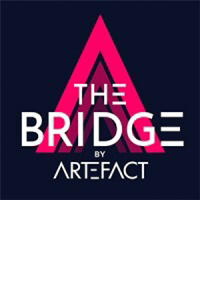In the dynamic world of digital marketing and data monetization, the retail sector has always been a pioneer, leveraging its vast data resources to open new revenue streams.
A primary example is retail media, where retailers provide brands with the opportunity to leverage their consumer data to advertise directly on their platforms or other non-owned media touchpoints, creating a win-win situation for both parties. Retailers benefit from additional revenue streams, while brands are able to reach their target audiences in a more direct and personalized manner.
Today, as the retail media landscape matures, a new player is emerging on the horizon: travel media. With the unique needs of brands in sectors like beauty and spirits that dominate travel retail, the potential of travel media is vast and largely untapped.
The imperative of consumer travel intent
Understanding consumer travel intent and plans (which destination, which route, which date) has become critical for brands operating in travel retail. This data informs a wide range of decisions, from marketing strategies and store operations, such as optimizing sales associate schedules, to demand forecasting, and inventory management. While there are solutions that predict traffic based on origin and destination, they only scratch the surface of what’s possible.
Challenges and opportunities in travel activation
For sectors such as beauty and spirits, travel presents a unique opportunity to acquire new customers and build brand loyalty. Travelers have time. The period that begins when a traveler passes through security and ends when they board a plane is often referred to as the “golden hour” because it’s prime time for spending at duty-free shops. Traveling is also an opportunity for consumers to seek good prices, experience, or exclusive products.
The key challenge for brands in the travel sector is to effectively engage individual consumers throughout their physical journey, therefore they need to know who will be traveling when and where for effective activation pre, during and after travel. Currently, many brands rely on the advertising services of online travel agencies (OTAs) to target audiences based on their actual bookings information. In 2022, Booking.com, Trip.com and Expedia recognized advertising related revenue of $894M (“advertising and other revenues”), $366M (“other business” consisting primarily of online advertising services and financial services), and $777M (“advertising and media”).
However, OTAs have their limitations. Their data might not be comprehensive, and their audience coverage can be skewed. Notably, consumers who book through OTAs might differ significantly from those who book directly with hotels or airlines.
Hotels and airlines: The new data goldmine
Apart from OTAs, hotel chains and airlines are treasure troves of consumer data. They’re privy to consumers’ travel plans, preferences, and behaviors, often capturing as much information as OTAs, if not more. With nearly half of all bookings made directly with hotels and airlines, these companies are sitting on a goldmine of data. This positions them perfectly to emulate retailers by monetizing their data, either by offering insights to brands or by facilitating the activation of specific audiences.
Retailers have successfully leveraged retail media, which now represents a significant portion of the overall media market. Retail media is expected to reach $100B by 2027.
If hotels and airlines use data partnerships strategically, they could unlock lucrative revenue streams and transform the travel media landscape.
The right partner and the right tech
Travel media represents a unique win-win opportunity, for travel companies to open a new revenue stream, for brands to activate their consumers in a more precise way and offer better experience along their journey.
For travel companies and brands to fully harness the potential of travel media, they must:
1. Identify the right partners for them to build such data partnerships depending on their respective objectives and coverage (e.g some airlines or hotel chains might be more interesting than others for a given brand to partner with).
2. Lay the technical foundations: Both travel companies and brands must ensure they have the right technical infrastructure based on their selected use-cases with key consideration around:
Ultimately, as businesses strive to deliver more personalized experiences, integrating conversational data into their consumer-centric use cases is not only beneficial, it’s essential. With advances in generative AI and LLMs, the barriers that once made conversational data difficult to leverage are rapidly disappearing. It’s time for organizations to embrace the potential of conversational data and integrate it into their strategies, ensuring that they remain at the forefront of consumer engagement in the digital age.
The road ahead for travel players
Travel media represents a new, opportunity-rich frontier. With the unique data they possess, hotels and airlines are poised to revolutionize the way brands in sectors like beauty and spirits engage with consumers in travel scenarios. The journey has just begun, and the road ahead promises exciting possibilities for both brands and travel entities. As a first signal, in 2022, Marriott announced the launch of its Marriott Media Network, which will ultimately allow brands to leverage their consumer data on the more than 164 million members of the company’s travel program, enabling more curated activation and engagement.

 BLOG
BLOG






